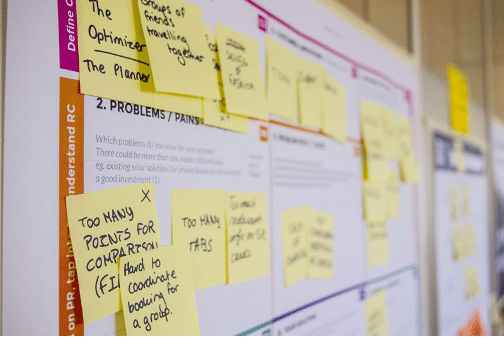Crises don’t usually come with a warning. Whether it’s a global pandemic, a cybersecurity breach, or a supply chain disruption, how a business responds can define its future. Over the years, we’ve seen companies either thrive under pressure or crumble from chaos. What sets them apart isn’t luck—it’s preparation, clarity, and the willingness to adapt.
One of the unsung heroes behind successful recovery stories is enterprise risk management (ERM). While it might sound like another boardroom buzzword, ERM is the bedrock of sustainable business resilience. It’s not about fearing risks—it’s about understanding them, planning ahead, and creating a culture where strategic responses replace panic.
Why Risk Management Matters Now More Than Ever
We are a globalized world where a small disruption can allow its impact to ripple across the globe. Think about how a container ship stuck in the Suez Canal shut down commerce valued at billions of dollars or a tweet can tank stock prices. These are reminders that companies of all sizes cannot afford to operate like their risk occurs after the fact.
Consumers today expect more transparency and accountability as well. They notice how brands handle adversity. A brand that communicates honestly, protects its employees, and continues to serve customers responsibly is going to earn their trust—even when things turn sour. ERM equips companies with tools for establishing such a high level of trust.
Building Blocks of an Effective Crisis Strategy

So how do you really prepare for the unanticipated? It starts with a flexible yet realistic plan. The best crisis plans aren’t reactive—they’re grounded in basic principles that guide decision-making when things turn ugly. Let’s dissect the key elements that can survive the storm for your business.
1. Anticipate the Inevitable
Most businesses fall victim to, “That won’t happen to us.” Wake-up call: All companies are vulnerable. ERM includes scenario planning—what if your primary supplier goes out of business? What if your customer information is hacked? By asking difficult questions, you can spot blind spots and prepare.
User tip: Businesses that conduct crisis simulations on a regular basis bounce back more quickly. Why? Because their staff is used to the drill. It reduces confusion and overconfidence in the face of an actual issue.
2. Empower Your People
Risk management is not the sole domain of C-suite leaders. Your customer support agents, your delivery personnel, your marketers—every one of them is involved in crisis management. Companies that empower their people to think on their feet and respond with empathy do well.
Real-life example: During COVID-19, many local companies empowered staff to make on-the-spot decisions about refunds, delayed deliveries, or customer service. That human touch turned angry buyers into brand ambassadors.
3. Communication Is Everything
Silence during a crisis is a deafening message—and not a positive one. An effective communications plan includes internal messaging, public statements, and ongoing updates on all channels. Make sure your voice is calm, honest, and proactive.
Tip: Don’t wait until things are in shambles to start communicating. Prebuild templates, assign spokespeople, and build relationships with your audience ahead of time.
Shifting from Short-Term Fixes to Long-Term Vision

Some organizations are so focused on “making it through” a crisis that they miss the chance to transform. ERM encourages companies not only to manage risk but to use it as a catalyst for expansion.
1. Turn Setbacks Into Strength
Let’s say a restaurant is called out for a food safety problem. A nice company will issue a single apology and hope to get lucky next time. A proactive company will review its entire supply chain, train its employees, and report on progress publicly. The result? An action-driven comeback story, not a whining one.
2. Use Data to Drive Better Decisions
Good enterprise risk management isn’t just monitoring financial metrics but also customer behavior, supply trends, and worker sentiment. Having a full view allows leaders to move on crises with confidence, not conjecture.
Consumer behavior trend: Customers today expect brands to be data-sensitive—anticipating needs, solving problems quickly, and learning from mistakes. Risk-aware businesses use these lessons to stay agile.
Learning from Brands That Adapted Well
Let’s travel back to the early days of the pandemic. Some global brands managed to pivot in almost a blink of an eye—fragrance manufacturers repurposed their production lines to make hand sanitizer, restaurants began selling DIY meal kits, and yoga studios repurposed their in-person classes online. These were not acts of happenstance; they were intentional decisions guided by good risk management theory. Enterprise risk management (ERM) enabled such businesses to envision new threats arising, identify new opportunities, optimize resources, and retain the customers’ trust throughout the disruption.
Tips for Making Risk Strategy Part of Everyday Business
It’s easy to talk about grandiose concepts, but how do you actually make it happen in everyday work? Start with something small. Even if you’re going it alone or working with a tiny team, enterprise risk management (ERM) principles can be applied. Begin with the risk assessment, the simplest one: consider what might go awry and map out how you’ll respond. Then, focus on developing a risk-aware culture. Encourage open discussion so the team can report issues without fear of retribution. Build risk awareness into your onboarding process and regular team check-ins. Lastly, keep in mind that risk strategy is not a fixed entity. What was effective six months prior may be ineffective now. Form a habit of reviewing and updating your plans, gaining from customer feedback, market shifts, and wider industry trends.
The Real Competitive Edge
Crisis is not an “if,” it’s a “when.” But the good news is that each challenge presents an opportunity to demonstrate your business’s values, resilience, and flexibility.
Risk management is not about eliminating uncertainty; it’s about being prepared to confront it head-on. The companies that value preparation, equip their teams, and empathize with their people aren’t merely surviving—they’re creating new benchmarks for what intelligent, contemporary companies should be.
Ultimately, your strategy isn’t about remaining in business. It’s about earning trust, creating loyalty, and showing up for your community when the stakes are highest.
